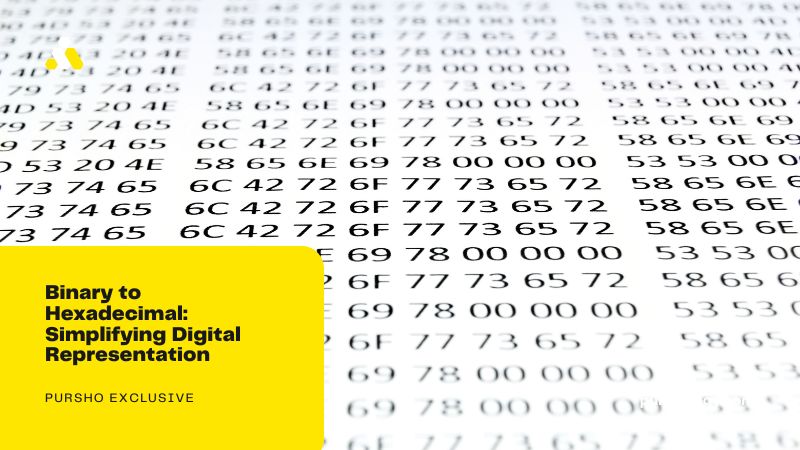In the world of computing and digital systems, numbers are often represented in various bases to simplify their manipulation and storage. Two commonly used bases in computer science are binary (base 2) and hexadecimal (base 16). Binary is fundamental to digital electronics, as it represents information using only two symbols: 0 and 1. Hexadecimal, on the other hand, is widely used in programming and data representation due to its compactness and ease of conversion. In this article, we will explore the process of converting binary to hexa decimal, uncovering the beauty of this conversion and its importance in the digital realm.
Understanding Binary and Hexadecimal
Before diving into the conversion process, let’s briefly understand binary and hexadecimal systems:
Binary System: In the binary system, each digit (bit) can only have two values: 0 or 1. It is the foundation of all digital computing, as computers use binary digits to represent data and perform calculations.
Hexadecimal System: Hexadecimal, or simply “hex,” uses 16 symbols to represent numbers: 0 to 9 and A to F. The letters A to F are used to represent values from 10 to 15, allowing concise representation of large binary numbers.
Binary to Hexadecimal Conversion
The process of converting binary to hexadecimal involves grouping binary digits into sets of four (nibbles) and then mapping each group to its corresponding hexadecimal symbol.
Group Binary Digits
Begin by dividing the binary number into groups of four digits, starting from the rightmost side. If the number of digits is not a multiple of four, add leading zeros to create complete nibbles.
Assign Hexadecimal Symbols
Next, convert each nibble (4-bit group) to its hexadecimal equivalent using the following table:
Binary Hexadecimal
0000 0
0001 1
0010 2
0011 3
0100 4
0101 5
0110 6
0111 7
1000 8
1001 9
1010 A
1011 B
1100 C
1101 D
1110 E
1111 F
Concatenate Hexadecimal Digits
Finally, concatenate the hexadecimal symbols obtained from Step 2 to form the hexadecimal representation of the original binary number.
Example Conversion
Let’s convert the binary number 110110101010 to hexadecimal:
Step 1: Group the binary digits into nibbles: 1101 1010 1010
Step 2: Convert each nibble to hexadecimal: DAA
Step 3: Concatenate the hexadecimal digits: DAA
The binary number 110110101010 is equivalent to the hexadecimal number DAA.
Importance of Binary to Hexadecimal Conversion
The binary to hexadecimal conversion is widely used in computer programming, digital design, and data representation for several reasons:
Compactness: Hexadecimal provides a more concise representation than binary. A 32-bit binary number requires 8 digits in hexadecimal, making it easier for programmers to read and write.
Memory Addressing: Memory addresses in computer systems are often represented in hexadecimal, as they are typically 32 or 64 bits long.
Colour Representation: In computer graphics, colours are often represented using hexadecimal codes, making it easier to define and manipulate colours.
Debugging and Testing: Hexadecimal is commonly used in debugging and testing to view and modify binary data more conveniently.
Conclusion
The conversion from binary to hexadecimal is a valuable tool in the world of computing. It simplifies the representation and manipulation of binary data, making it easier for programmers and designers to work with large numbers efficiently. Understanding binary to hexadecimal conversion allows us to appreciate the elegance and practicality of these number systems, contributing to the foundation of modern digital technology. As technology continues to evolve, binary and hexadecimal will remain essential components of the digital landscape, facilitating the efficient communication and storage of information.




